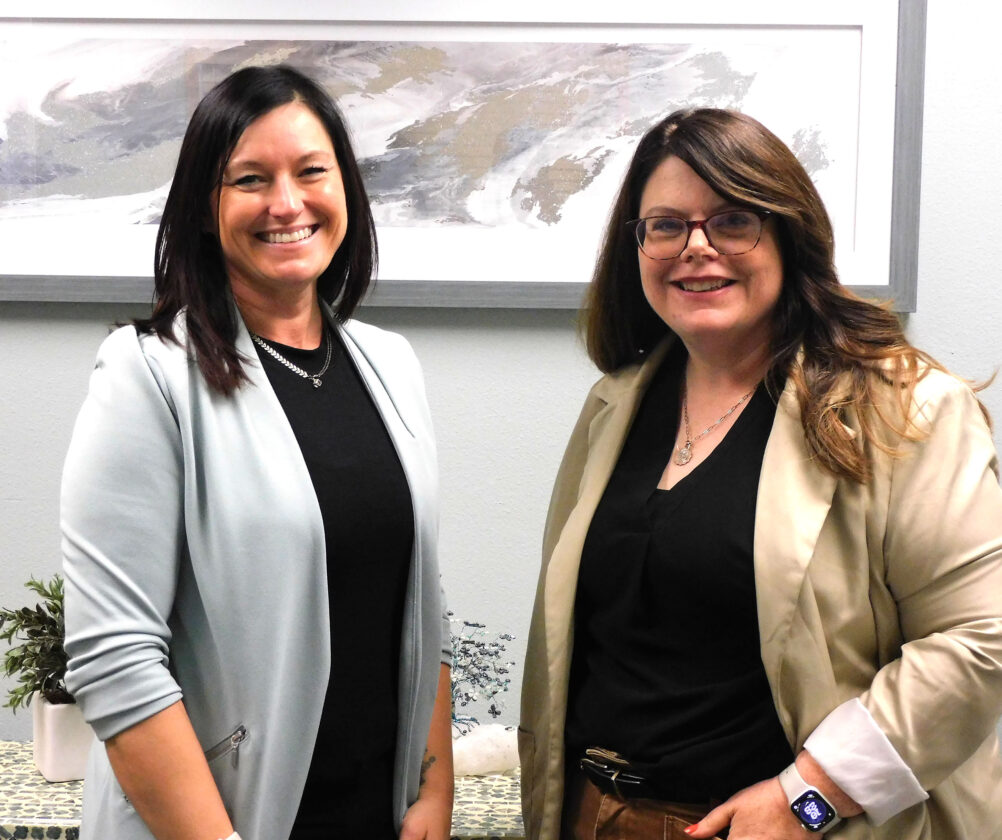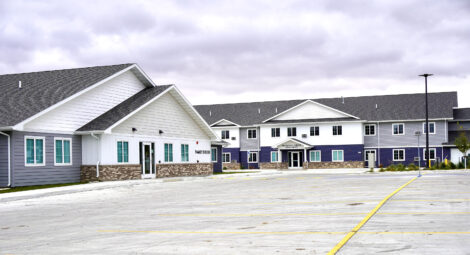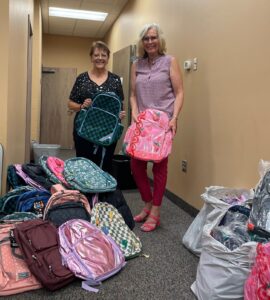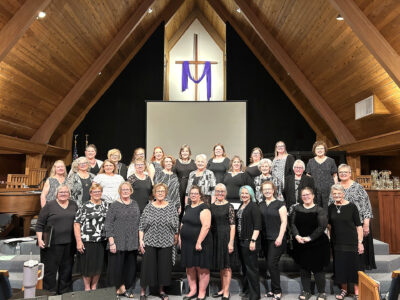‘We all know someone’: Domestic violence survivors, advocates push back against epidemic

Wendy Harper/MDN Tara Bjornson, assistant director of the Domestic Violence Crisis Center, and Jill McDonald, executive director, are shown at the center Tuesday, Oct. 29.
Assistant Director Tara Bjornson of the Domestic Violence Crisis Center in Minot, said people often misunderstand what violence looks like.
“Domestic violence is a pattern of control,” she said. “Violence, intimidation, financial abuse, using children, manipulation — all of it is about keeping someone compliant. It’s not always about visible injuries. It’s about power.”
Executive Director Jill McDonald said survivors often carry invisible wounds.
“We learned quickly that justice doesn’t always happen in the courtroom,” she said. “People lose their community, their faith, their identity. Our work is helping them rebuild what was taken,” she said.
Domestic violence is defined as a pattern of behaviors that a current or former partner uses to gain power and maintain control, including physical assault, sexual violence, threats, intimidation, financial control, stalking and emotional abuse, according to the Centers for Disease Control and Prevention (CDC).
October marks Domestic Violence Awareness Month, a national observance created by the U.S. Department of Justice’s Office on Violence Against Women to focus communities on prevention, survivor safety and accountability within every neighborhood and social circle, according to the federal office’s guidance.
The CDC reports 41% of U.S. women and 26% of U.S. men experience physical violence, sexual violence or stalking by an intimate partner in their lifetime. Many experience chronic pain, post-traumatic stress disorder, depression and other long-term health effects tied directly to abuse.
The Bureau of Justice Statistics estimates there were more than one million domestic violence victimizations nationwide last year, but researchers caution that many incidents are never reported to law enforcement due to fear, manipulation, stigma and retaliation.
Abusers often convince victims that no one will believe them. Bjornson said that tactic is common.
“People eventually convince themselves the abuse isn’t that bad,” she said. “That makes calling for help incredibly hard.”
ND: Small towns, big impact
Domestic violence affects the state in ways many never see. North Dakota’s advocacy programs served more than 6,100 victims last year, according to statewide coalition data. Protection and restraining orders made up roughly 36% of domestic-relations court filings statewide during that time, according to the North Dakota Court System.
The worst cases end in homicide. Five North Dakotans were killed in domestic violence incidents last year, according to the Attorney General’s office. Historical state data show most female homicide victims here are killed by a partner or former partner.
Advocates say numbers alone can’t show the full crisis.
“It happens everywhere,” McDonald said. “It’s impacting your kids’ classmates. We all know someone — whether we acknowledge it or not.”
McDonald said the decision to leave is rarely simple.
“Many survivors don’t want the relationship to end,” she said. “They want the violence to stop. The grief can feel like they made the wrong choice. But the truth is, the harm is not their fault.”
Survivors often face shame, self-blame and fear of judgment, especially in rural communities where everyone knows each other.
Bjornson said isolation is one of the most devastating barriers.
“People are less connected than they used to be,” she said. “Loneliness convinces survivors that nobody will understand or help.”
Advocates say leaving is not just emotional; it’s logistical.
“Finances, housing, transportation after bus hours, child care — all huge barriers,” Bjornson said. “Even in a mid-sized city like Minot, someone can be trapped just by the distance from one end of town to the other.”
Economic stress doesn’t cause abuse, but McDonald said it can make a dangerous situation more volatile.
“If someone is already controlling or violent, the pressure of money only squeezes harder,” she said.
Survivors face healthcare access issues, job instability, loss of transportation and safety concerns for their children.
And advocates remind the public that men are victims too. National CDC data confirm it, and stigma keeps many silent.
Children are always affected
Even when violence isn’t directed at them, children absorb it.
“It’s impacting your kids’ classmates,” McDonald said. “Students living with violence carry trauma to school. That affects learning, friendships — everything.”
Both leaders said prevention must start young.
“We’ve spent decades only teaching red flags,” Bjornson said. “We need to teach green flags — respect, boundaries, consent — what healthy love looks like.”
People ask, “Why don’t they just leave?” Advocates say that’s the wrong question.
“Humans are multifaceted,” McDonald said. “Someone can be loving and also harmful. Survivors try to make the good outweigh the danger, until they can’t anymore.”
“Nobody wants to admit this could happen to them,” Bjornson added.”We are taught to be strong and independent. But abuse can happen to anyone who loves.”
Police respond once. Courts intervene briefly. Doctors treat injuries during an appointment.
“But an advocate is there through all of it,” McDonald said.
The Domestic Violence Crisis Center serves Ward, McHenry, Renville and Pierce counties — a region roughly the size of Connecticut — offering:
– 24/7 crisis line
– Emergency shelter
– Therapy
– Court advocacy
– Virtual and in-person support groups
– Adult forensic interviewing (trauma-informed)
– Intervention programs for those using violence
“No one comes to us on their best day,” Bjornson said. “Even if something just feels a little off, call. Our services are free and confidential.”
Advocates carry trauma too. McDonald said the center prioritizes staff mental health.
“If we’re not well, survivors feel that,” she said. “We lead ourselves first so we can walk with the people we serve.”
The call to community
Bjornson said change starts outside the crisis center’s doors.
“We can all be the person who listens,” she said. “We can all push for accountability in sentencing. We can all support survivors instead of doubting them.”
Federal prevention guidance also urges communities to step up, according to the Office on Violence Against Women.
Domestic violence thrives in silence. Survivors overcome when someone breaks it.
Help is available by contacting:
– Domestic Violence Crisis Center, Minot, 24/7 crisis line, emergency shelter, therapy and advocacy across Ward, McHenry, Renville and Pierce counties, according to center leadership. 24-hour crisis line: 701-852-2258 ext 6.
– Statewide, the North Dakota coalition maintains a toll-free line connecting callers to the nearest advocacy program in the state, 1-888-255-6240.
– National Domestic Violence Hotline, confidential help 24/7 by calling 1-800-799-7233 or texting START to 88788, according to the Office on Violence Against Women.



